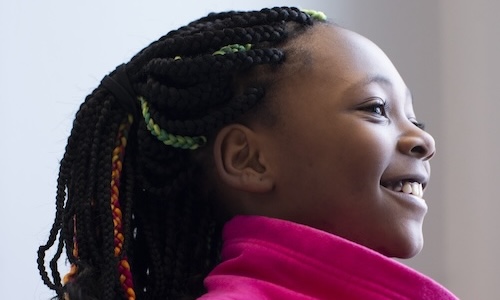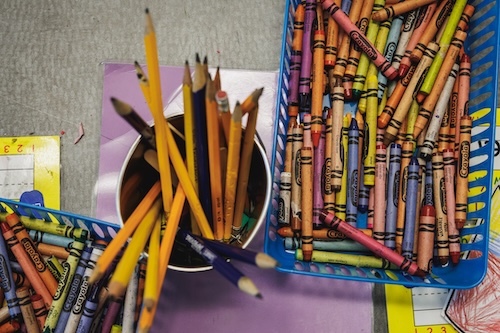
When I was a middle school English language arts teacher in Washington state, I was an advocate for migrant, bilingual students and Title I supports. I spent a lot of time thinking about factors that supported my students’ success in the classroom. I knew it helped to provide them with access to high-interest books and connect their personal experiences to reading and writing assignments. I also saw the benefits of securing grants for tech tools and working with colleagues to develop rich after-school and summer programs for our students.
I’ve been thinking about the opportunities that impact student success for a long time, and I was excited to learn, when I joined NWEA, that my team was researching and discussing opportunities that impact student learning, too. It all comes down to just giving kids a chance.
What is OTL?
Student success is directly connected to a young person’s opportunity to learn, also known as OTL. The term itself generally refers to whether students have access to the conditions, instruction, resources, and supports they need to learn and thrive in school. There are multiple layers to OTL, however.
First, there are large-scale systemic factors, like federal and state school funding, that impact students’ opportunity to learn. In addition, OTL can include local economic factors, like access to healthy food, libraries, and safe outdoor spaces. It can also include intrapersonal factors, such as the quality of teacher–student relationships, implicit or explicit bias, and the use of inclusive practices.
The concept was introduced in the 1960s, but it is now getting renewed attention nationally due to pandemic-related disruptions to our education systems. The U.S. Department of Education has touted the expansion of OTL measures in accountability systems.
Our NWEA policy team is deeply engaged in conversations around OTL as part of our policy agenda. Specifically, we’re focused on ensuring high expectations for all students and better identifying what content students have had the opportunity to learn in the classroom. In addition, we strongly prioritize ensuring that all students, teachers, and schools have the necessary resources and opportunities to receive and deliver a high-quality education.
The instructional layer of OTL
For teachers, instructional aspects of OTL are critical. We need to meet our students where they are in their learning, while also making sure they have access to instructional content that is aligned to grade-level expectations and assessments. When I was a bilingual educator, my students took an annual English language proficiency (ELP) exam, and they also took the year-end state summative assessments for English language arts, math, and science.
[W]e’re focused on ensuring high expectations for all students and better identifying what content students have had the opportunity to learn in the classroom.
I noticed a gap in our instructional materials and the alignment with the expectations of the state ELP exam. Once I identified this gap, I advocated for opportunities for additional speaking and listening instructional time for students who needed to take the ELP exam. This ensured that kids had the instruction and practice opportunities to support their ELP progress. With targeted speaking and listening instruction, the number of students who met proficiency in the speaking and listening strands on their ELP exam significantly increased.
Did I teach that?
Today, in my role at NWEA, I focus on assessment design and development. Our team is researching and developing a reporting tool to help teachers collect and analyze instructional data to better understand student performance. It will allow teachers to input the standards taught prior to an assessment and then reflect on student performance after the test with richer data. Specifically, we’re focusing on whether students have the opportunity to learn concepts and skills before being tested on them, and we are supporting teachers in having and using this data to inform their instruction.
Our new reporting tool will give teachers the chance to input OTL instructional information about content they taught and then receive score reports that show student performance results by each standard accordingly. So teachers will be able to see student assessment performance results on both the standards taught and not taught.
Our team is researching and developing a reporting tool to help teachers collect and analyze instructional data to better understand student performance.
Whether it’s because of the design of an assessment, the timing of when tests are administered, the pacing of a curriculum, or the complexity of standards, teachers aren’t always able to teach the content that appears on state assessments by the time their students take them. In our through-year model, which is an adaptive statewide assessment administered two or three times a year, students will typically see items on assessments that are aligned to the standards in fall and winter but have either not yet been taught or been only partially taught at the point of test administration. However, the OTL reporting tool will help teachers in such instances by providing them with an opportunity to identify the standards taught and helping them gain insights into areas that might need more instructional time.
A recent national survey by Educators for Excellence found that teachers believe the biggest thing policy makers could to do improve state tests would be to separate results based on what was and wasn’t taught, since some summative tests are given before teachers have completed all their teaching for the year. I’m excited that we will be able to provide timely, standards-level data to teachers so they can confidently make responsive instructional decisions for what to teach next and where they may still need to focus instruction to address opportunity gaps.
A tool for educators
We hope this effort by NWEA will support teachers in reflecting on their practice and making purposeful instructional decisions. For example, the new score report will help teachers understand whether students have access and opportunities to learn the state’s priority standards. And it may highlight strengths and weaknesses in instructional materials, content alignment and scaffolding supports, or professional learning needs.
When I was teaching, I saw firsthand what happened when a student’s opportunity to learn was limited by the lack of instructional time and classroom practice that was needed to meet grade-level proficiency expectations. I saw the difference it made when we identified opportunity gaps and addressed them to support student success.
OTL data can be a powerful tool for responsive teaching and can help ensure that all kids have the opportunity to learn. I am excited to be part of this movement for inclusive change and to be using OTL data with students as part of continuous learning cycles to inform instructional next steps and strategies.
I’ll be sharing more on this topic at the NWEA Fusion gathering in Phoenix June 28–30 and look forward to connecting with educators in person at this event. Our team would love to hear your thoughts on collecting and using OTL data and how it can improve education for all students. You can find us on @NWEAPolicy on Twitter.







